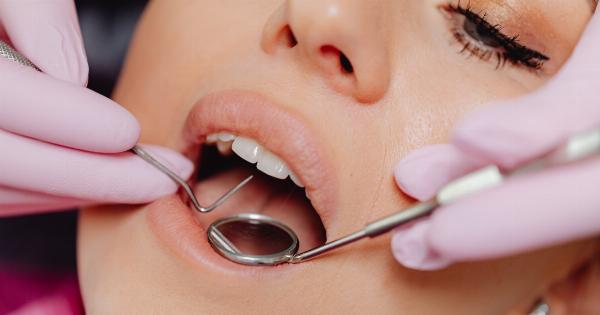Teething is a significant milestone in a baby’s development, but it can also be a challenging time for both the baby and the parents. As your baby’s teeth begin to emerge from their gums, they often experience discomfort and pain.
If your little one is struggling with teething pain, it’s essential to find ways to alleviate their discomfort and provide some relief. In this article, we will explore natural remedies and practical tips to help soothe your baby’s teething pain.
Understanding teething
Teething is the process of a baby’s first set of teeth breaking through the gums. This typically begins around six months of age, but it can vary from baby to baby.
The first teeth to emerge are usually the lower front teeth, followed by the upper front teeth. Over time, the remaining teeth will appear, resulting in a total of twenty primary teeth by the age of three. However, each baby’s teething experience can differ in terms of timing and symptoms.
Common signs and symptoms
Teething can manifest in various ways, and not all babies experience the same symptoms. However, some common signs of teething include:.
- Irritability and restlessness
- Excessive drooling
- Swollen or tender gums
- Chewing on objects
- Difficulty sleeping
- Loss of appetite
- Red or flushed cheeks
Natural remedies for teething pain
Instead of relying solely on over-the-counter medications, many parents opt for natural remedies to provide relief to their teething babies. Here are some effective natural remedies to try:.
1. Chilled teething rings
Chilled teething rings are a go-to solution for many parents. The cool temperature helps numb the gums and provides relief from teething discomfort.
Ensure the teething ring is specifically designed for teething babies and has been thoroughly cleaned before use.
2. Cold washcloth
A cold washcloth can be an excellent alternative to teething rings. Simply wet a washcloth, place it in the refrigerator for a short period, and then allow your baby to chew on it.
The cold temperature combined with the texture of the cloth soothes your baby’s gums and eases their discomfort.
3. Gum massage
Gently massaging your baby’s gums with your clean finger can help alleviate teething pain. Apply light pressure in a circular motion on the gums to provide a soothing sensation. Make sure your hands are clean before attempting a gum massage.
4. Breast milk popsicles
If you are a breastfeeding mother, consider creating breast milk popsicles for your teething baby. Fill a popsicle mold with expressed breast milk, freeze it, and offer it to your little one.
The frozen breast milk not only helps numb their gums but also provides hydration and nutrition.
5. Chamomile tea
Chamomile tea has natural soothing properties that can help relieve teething pain. Brew a weak chamomile tea, allow it to cool, and use a clean cloth to apply it to your baby’s gums.
Alternatively, you can offer your baby a small amount of chamomile tea in a bottle to sip on.
Practical tips for teething
In addition to natural remedies, implementing practical tips can make the teething experience more bearable for both you and your baby. Consider the following suggestions:.
1. Provide appropriate chewing toys
Offer your baby safe and suitable chewing toys to help relieve teething pain. Avoid toys with small parts that could pose a choking hazard and opt for ones specifically designed for teething babies.
Chewing on these toys can provide counter-pressure and alleviate discomfort.
2. Maintain good oral hygiene
Even before your baby’s first tooth emerges, it’s essential to establish good oral hygiene practices. Gently wipe your baby’s gums with a clean, damp cloth after feedings.
Once the teeth start appearing, use a soft-bristled baby toothbrush and a smear of fluoride toothpaste appropriate for their age.
3. Offer cold and soft foods
Introducing cold and soft foods can provide relief to your teething baby. Opt for chilled fruits such as banana or watermelon slices, yogurt, or smoothies. The cold temperature and soft texture can help numb their gums and provide a refreshing sensation.
4. Keep baby dry
Excessive drooling is a common symptom of teething. To prevent drool rashes and skin irritation, ensure you keep your baby’s face dry by gently wiping it with a soft cloth.
Apply a petroleum-free barrier cream to protect the skin from excessive moisture.
5. Provide extra love and comfort
Teething can be a challenging time for your baby, so providing extra love and comfort is crucial.
Cuddle and soothe your baby when they are experiencing discomfort, sing lullabies, and engage in calming activities to distract them from the teething pain.
When to consult a healthcare professional
While teething is a natural process, there are instances where consulting a healthcare professional is necessary. Seek medical advice if:.
- The teething pain is persistent and severe
- Fever accompanies teething
- Your baby is experiencing diarrhea or vomiting
- There are signs of infection around the gums
Teething discomfort is a temporary phase in your baby’s life that requires patience and care. By implementing natural remedies, following practical tips, and providing constant love and comfort, you can help ease your baby’s teething pain.
Remember that every baby is unique, so it may take some trial and error to find what works best for your little one. Soon enough, those adorable little teeth will make their appearance, and the teething phase will become a distant memory.































